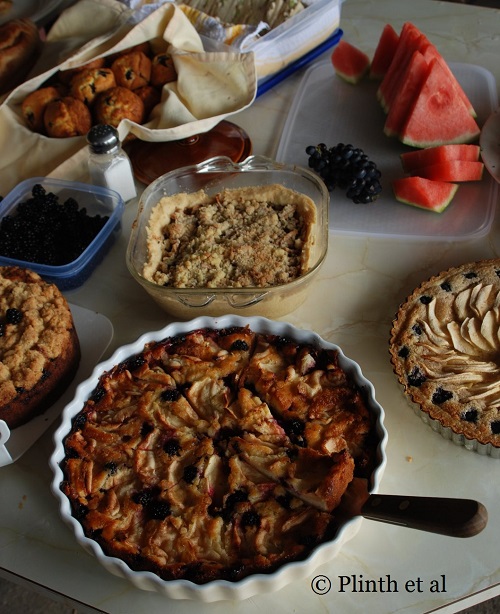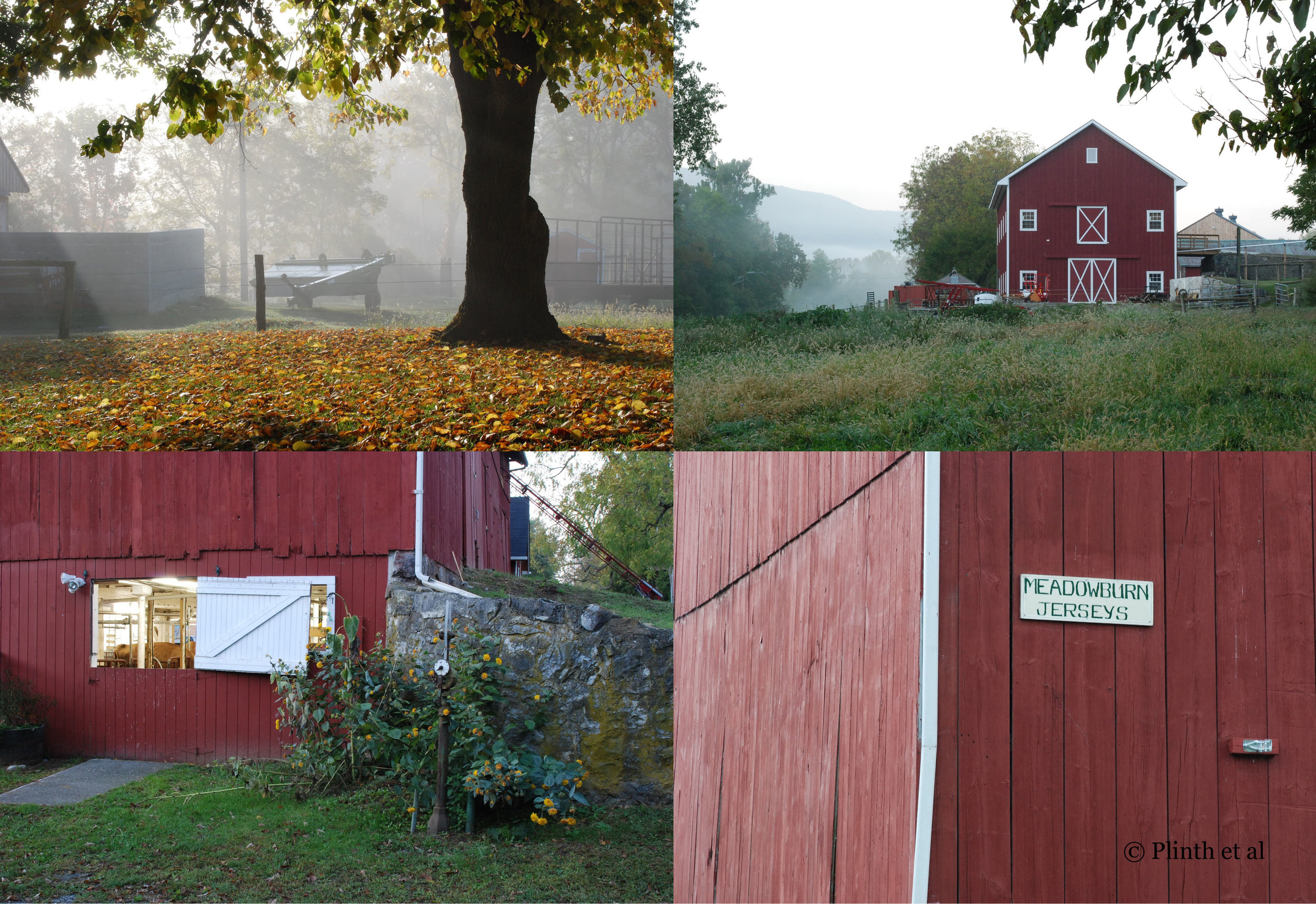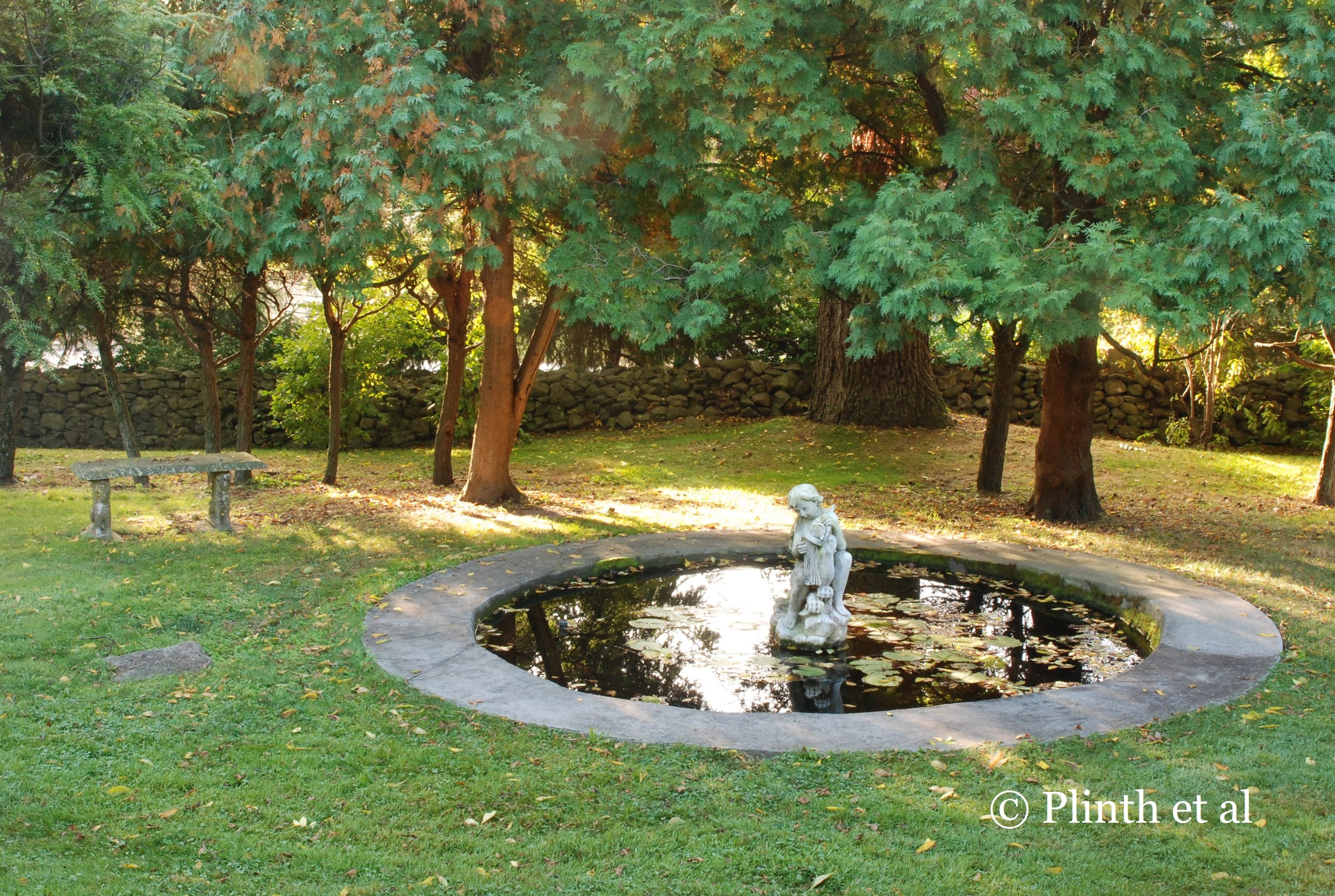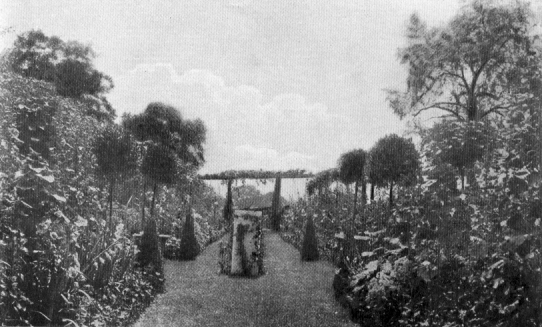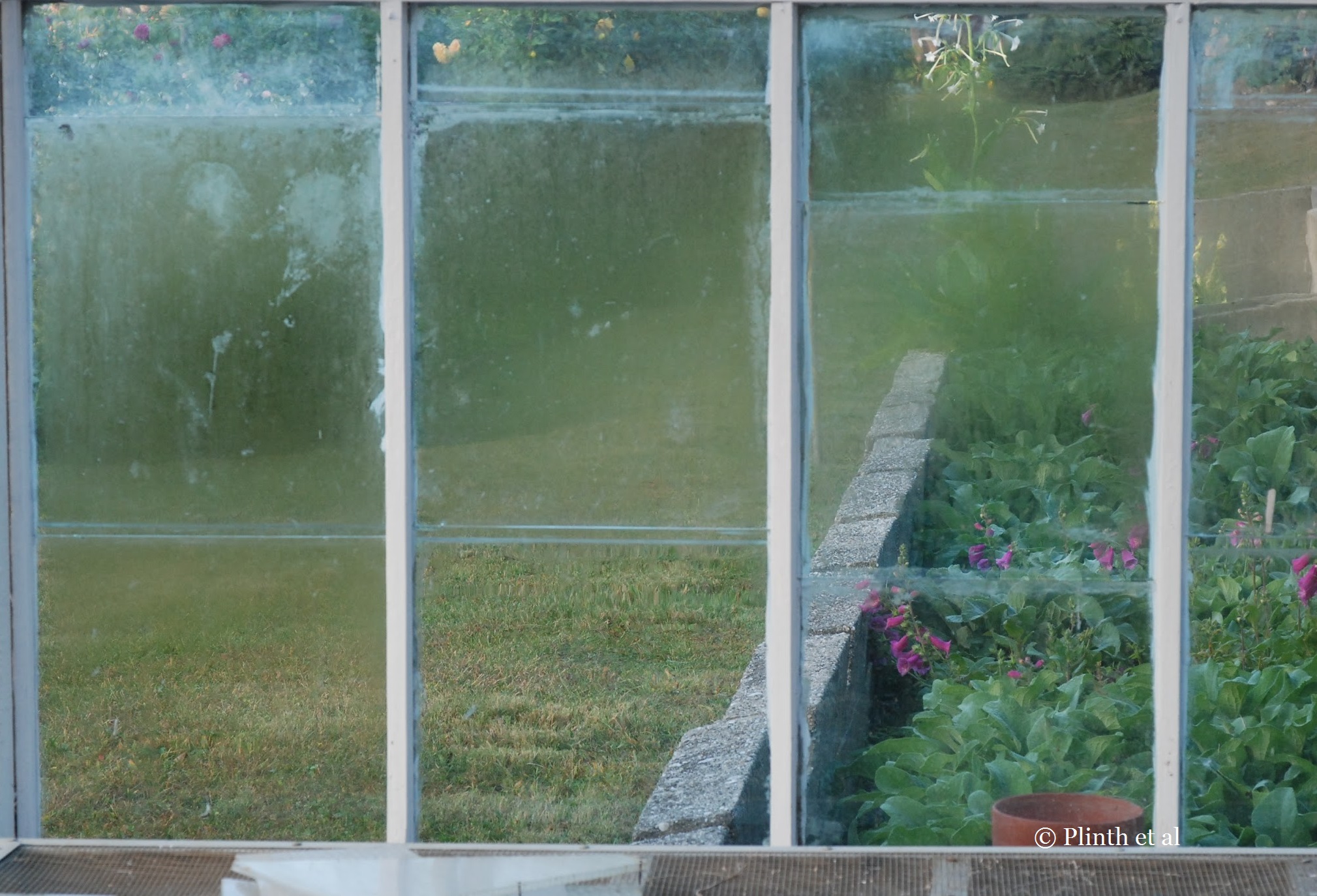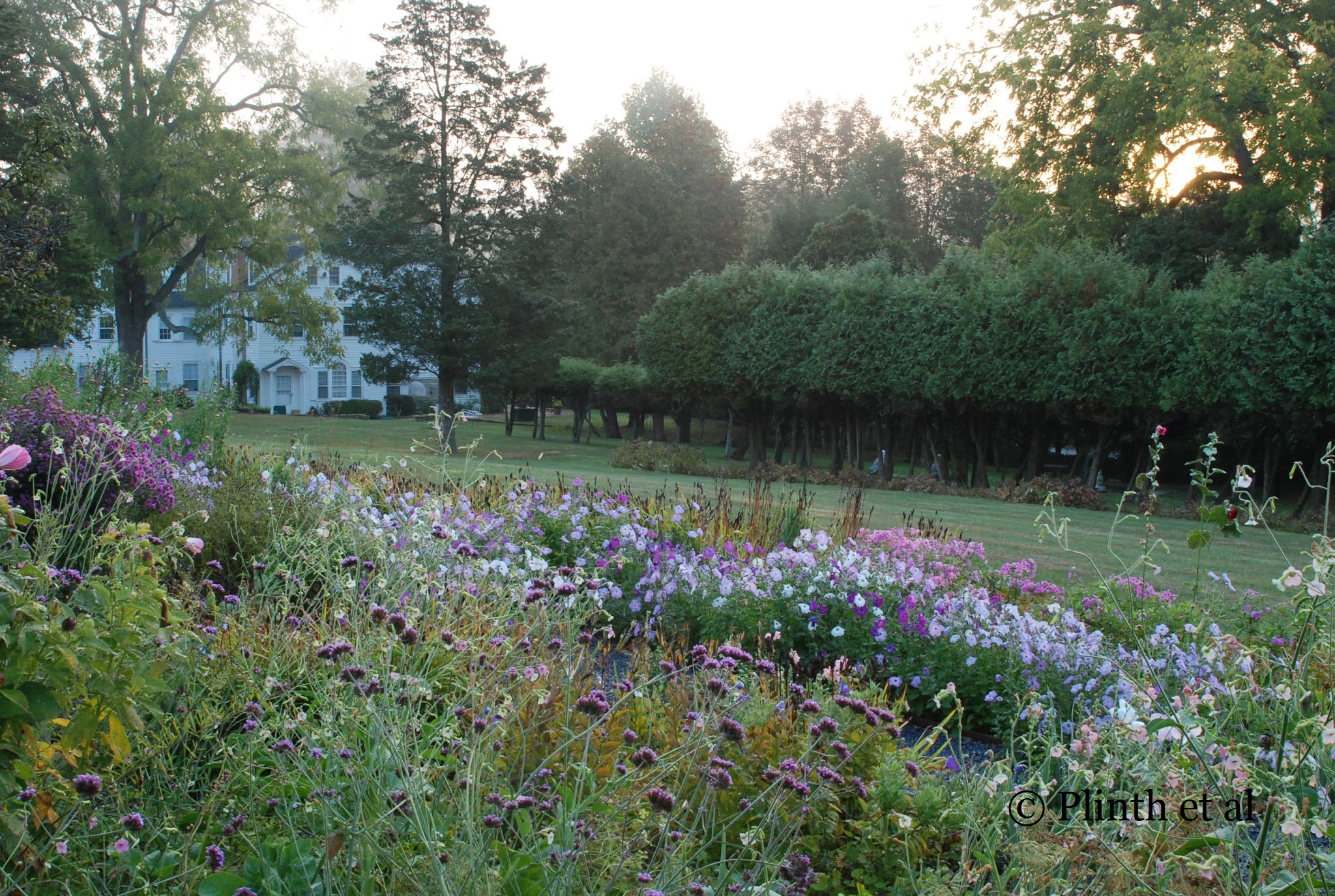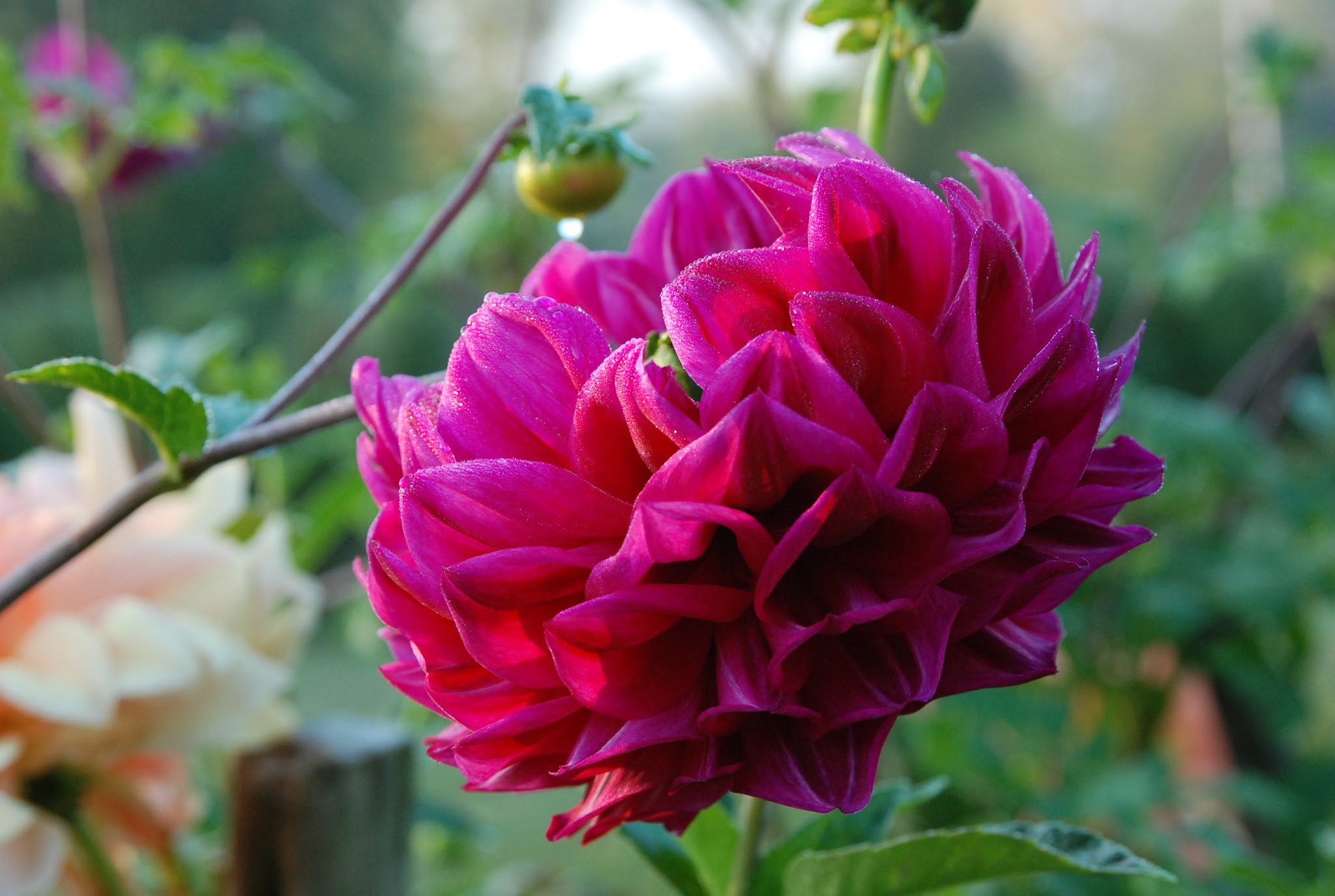5-10-5: Quill Teal-Sullivan, Garden Manager at Meadowburn Farm
UPDATE:Quill is now the Director of Historic Preservation at Dunn Gardens, Seattle, Washington State.
Like her classmate Wonsoon Park, Quill Teal-Sullivan was a Longwood Graduate Program student whom I became acquainted at various public garden events in the Philadelphia region. Her graduate studies led to her current position as the garden manager of Meadowburn Farm in northwest New Jersey, a stone's throw from the New York State border. A West Coast transplant from Seattle, Washington State, Quill comes from a very creative family - her mother is a garden designer and horticulturist, her father a potter and architect, and her sister an artist and designer! Her boundless energy and enthusiasm comes across in her work and her personality! I was very fortunate to have her company during my too brief idyllic stay at the garden.
Can you introduce yourself? Hello, my name is Quill. I was born and raised in Seattle, Washington. I currently direct the preservation efforts of the 130-year-old gardens at Meadowburn Farm, which were designed and built by Helena Rutherfurd Ely.
The arts or the garden? Gardens as art!
What is your first gardening experience? I have been gardening alongside my mother for as long as I can remember. When I was around 5 years old she gave my sister and I our own little garden beds where we could plant anything we wanted. I planted sky blue delphiniums that grew so big!
You worked in Seattle bakeries prior to your full dive into horticulture. Baking and gardening are nearly analogous - both, being an art and science, require patience, nurturing, and senses. As far fetched as it seems, how has baking help you become a better gardener?
It is so very true that gardening and baking have much in common, and it seems that people who enjoy gardening often enjoy baking. Although, in the early mornings when the sun rises and the birds awake, the bakers day is ending while the gardeners day is just beginning. This fact makes a world of difference. I would say that, more than anything else, my experience as a professional baker gave me great practice in putting my work out for the public to see, experience, and critique. This took me a long time to be comfortable with – to be accepting of potential failure for all to taste and see. I feel the same way about gardening sometimes. Especially as there is point in both gardening and baking when you have to relinquish some degree of control over your product: when the cake goes into the oven or the bulb is planted in the ground – you have to let go and hope for the best.
Deb Wiles, who has long been an advocate of garden history and design, lamented the fact that garden history is not offered as a separate discipline, like art history. Programs exist in UK, but not in US, yet you were able to tailor your dissertation at Longwood Graduate Program towards garden history and preservation. How did your topic come about and how were you able to convince your academic advisors/mentors about the topic's merit?
One of the great things about the Longwood Graduate Program (LGP) is that students tailor their thesis and coursework according to their individual interest and career goals within public horticulture. I applied for LGP wanting to focus in garden history having been inspired by my time working in historic gardens. I liked the idea of focusing my research on one landscape – it was an opportunity to become intimate with a specific site. I asked Bill Noble, formerly of the Garden Conservancy, if he had any recommendations, and he connected me with the owners of Meadowburn Farm. It caught my interest, especially since the garden was designed by a woman. So, out I went to visit Meadowburn and fell head over heels with the garden. My excitement about it was enough to convince Dr. Lyons, my advisor, that this was the topic for me. The trickier part was convincing two very kind professionals to join my thesis committee and commit to reading and editing 300 pages of research.
Gardens seem to still take the back seat behind art and architecture in our culture. I would have loved the opportunity to take more focused garden history courses in school. In LGP, I complimented the more traditional coursework with general architectural preservation courses, and used individual assignments to apply the lessons to gardens and landscapes. In a sense, this likely helped me be more rounded in my knowledge than I would have been in a strictly garden history course. But, it does not provide the stimulation of working with a professor and classmates in the same discipline. Attending historic landscape symposia was another way I could learn more about the field. I also reached out to several landscape architecture historians at universities throughout the country, all of whom were very supportive and gave of their time and thoughts generously – almost like private tutorials.
In our digital era, the notion of talking to people first-hand and leafing through dusty volumes for research seems archaic. But researching a history of a garden is a fun mystery! What aspects of the research did you enjoy the most? And what fascinating information did you discover about Helena Rutherford Ely during your research?
Such a fun mystery! Researching the history of Ely and Meadowburn was the most exciting and rewarding part of my thesis project. In the beginning I was told there was very little information out there about Ely and Meadowburn. There are no ‘Helena Rutherfurd Ely’ papers in a library anywhere. The Garden Club of America created an archive on Meadowburn at the Smithsonian in 1999, which compiled the limited information that was known to exist. In it was a reference to Ely’s grandson who I was able to find. He and his wife were very generous with sharing the information they had on Ely – including a guest book from Meadowburn dating from 1899 to 1917!! A treasure! This [lead] opened a Pandora’s box of new things to look into. That was a very exciting discovery.
I often followed strange leads – like researching people that she mentions in her books, or the publishers she worked with, or the seed companies she ordered from. This meant there were very frequently days spent in libraries that turned up no information at all. But, oh! the joy when I found something! One time I came across a box of original photographs of the garden in an archive with not a single mention of Meadowburn or Ely – just sheer luck. I started shaking from excitement and overwhelm – I had to put the pictures down because I thought my shaking hands would shred them.
Historic cultivars, such as the Meadowburn dahlias, are always prone to falling out of favor and lost to cultivation. How do you plan on safeguarding the historic cultivars at Meadowburn?
I believe the best way is to propagate and distribute the Meadowburn cultivars to other historic gardens, botanic gardens, and collectors, and encourage others to grow and safeguard them, too. The dahlias are particularly precarious as they are easily wiped out in one season. This is why there are not many dahlia cultivars still in existence that date to the early 1900’s, where as there are many old peonies cultivars from this era that are still widely grown and readily available on the market.
We are fortunate at Meadowburn to have had three generations of the same gardening family caring for the grounds since 1883. Albert Furman, Sr., the first generation gardener, was especially fond of the dahlias, a sentiment inherited by his son, and then passed to his grandson as more of an obligation to legacy than a fondness. But Walter DeVries, third generation gardener, has continued to take great care of the Meadowburn dahlias because of the tradition. He is now teaching me about Meadowburn dahlia culture, which comes with many funny anecdotes and stories from over the years - this makes the task of hammering large cedar stakes into the ground quite enjoyable.
Gardens on the East Coast tend to be rooted in classical tenets of Europe, whereas those on the West Coast combine different cultures, leading to distinct regionalism. What Pacific Northwest perspective do you hope to bring to Meadowburn?
This is a tricky question. Since Meadowburn is a historic landscape inspired by classical tenets of Europe, it would be hard for me to take too much liberty in introducing a Pacific Northwest perspective. But what I appreciate about West Coast gardening culture is that people seem more willing to take risks and work outside the box than on the East Coast. When I first moved East for LGP, I was shocked by the incredible amount of mowed lawn. Never in my life have I seen so much turf! Perhaps this response is indicative of a free and informal West Coast influence - and I imagine this will manifest subconsciously in my work at Meadowburn. Stay tuned!
When we think of eminent women in garden design or landscape architecture, we often think of those overseas, especially Gertrude Jekyll, Beth Chatto, or Mien Ruys. It seems that our rich tradition of American women in garden design and landscape architecture (i.e. Helena Rutherfurd Ely, Rose Standish Nichols, Beatrix Farrand) has not been accorded the same recognition and fame. Why do you suppose that this oversight is such?
Europe had a head start in the field of landscape design and horticulture, and gardening continues to play a much more central role culturally, at least in the U.K, than in U.S. Europe is also more advanced with issues of gender equality than the U.S., which plays a big role in the recognition of women in any professional field.
On another note, prominence in garden history for women might be correlated with the interest of an individual or group who recognizes the significance of her work. Is it my understanding that Gertrude Jekyll’s return to fame was in the second half of the 20th century when her papers, which had been saved by Beatrix Farrand, became accessible. This allowed scholars to research and publish on her work, and thus revive her story. And there is now new light shown on Beatrix Farrand with the work of organizations like the Beatrix Farrand Society. In time she will be increasingly recognized. So perhaps women in garden history need champions to resurrect and tell their stories. I hope to be Ely’s champion.
Historic gardens are often criticized for being 'ossified' or 'frozen in the past'. It's a difficult task for horticulturists to innovate without disrupting the historical precedents, yet had the original owners or gardeners been alive, they would have moved forward, using better plants or even removing overgrown trees. How do you plan on keeping one eye on the garden's historical legacy and the other on the future?
I hope to balance the preservation of the physical aspects of garden with the preservation of her greater gardening philosophy – one of experimentation, trial and error, change, conservation, practicality (more or less), and nostalgia. Ely was on the cutting edge for her time, and she would certainly be the first to rip everything out and change the garden up, I am sure! Ely had a very strong vision, one that influenced gardens throughout the country at a very formative time in the history of American horticulture. And the historical context in which she built these gardens and wrote about them is an important element in the garden’s significance. But to recreate the gardens as they were in 1903 or 1916 would be impractical. The bones of the garden still exist – hedges, hardscape, fountains, statuary, etc., and restoring these elements is important. But within this structure there is flexibility to creatively interpret her vision and philosophy.
Opening or preparing a historic garden for public visitation is not without its challenges. Heavy foot traffic can damage turf, plants once flowing onto the paths become hazards, and wheelchair access is difficult in some parts. How do you aim to preserve the atmosphere of Meadowburn without compromising public access?
Whatever changes and improvements are made to the landscape must be in keeping with the character of the garden. That is what makes Meadowburn special. As one of the owners says, “We do not want to look like an institution”. This may mean that we will never be 100% accessible. We do not have a complete plan yet for visitor amenities and circulation, but my hope is to have one accessible route through the garden that is interesting throughout the season. We plan to ease into public visitation - starting with limited tours by appointment. This will help inform us of the limitations of the garden, and what further changes should be made. A critical part of our plan, and my job, is to generate revenue from the garden. This means that some areas will need to accommodate events in a way they were not originally designed for. But we are fortunate to have a lot of open space, both in the garden and surrounding the garden, so I do not anticipate it will be difficult to integrate these new uses.
What advice do you offer to those interested in garden history and conservation? Read a lot. There are so many great books about historic gardens and designers available. Attend lecture series and symposia. Get involved in a historic garden or conservation organizations. Reach out to people in the field and ask for advice. Take your favorite garden historian out for coffee. And most fun of all, visit lots of gardens.
What gardens and places have inspired you? The redwood forests of Mendocino, California. The wildflower meadows of the Talkeetna Mountain range in Alaska. My mother’s garden in Seattle. Quirky nurseries owned by passionate plant nuts.
Ely is a well-seasoned traveler who interpreted what she saw overseas in her garden. What are a few of the gardens overseas you wish to visit and want to take from them? More than anything I want to visit the gardens abroad that inspired Ely. This will help me better understand her work at Meadowburn. I also want to spend time in Italy researching the current owner’s great Aunt Byba Vincenza Giuliani who owned Meadowburn after the Ely family. She was Italian, and spent the winters at her villa and gardens in Florence. She introduced her own flare to Meadowburn – she planted all of our bearded iris in the 1940’s. I would like to understand her influence and this part of Meadowburn’s history. And then I would like to go to Jeju Island in South Korea to see my friend Wonsoon Park, which he says is the most beautiful place in the world. Then to South Africa to visit my friend Martin Smit at Stellenbosch Botanic Garden, and see him float his baby girl on a water lily pad.
What is your desert island plant? A giant redwood, Sequoia sempervirens, because I could climb up to a nice branch and make a big nest to sleep in. And the canopy is an ecosystem in itself – berries and rhodies and little trees grow in the nooks and crannies, and little animals to make friends with. Then I would climb to the top and wave to the rescue plane overhead.
What do you look forward to the most? I look forward to the day when I have a garden of my own, and the time to make it everything I want it to be. And then, to have people come and visit me in my garden and to serve them lime popsicles. Eventually I look forward to gardening with my children and grandchildren, but that is a long way off.
Thank you Quill!
~Eric





